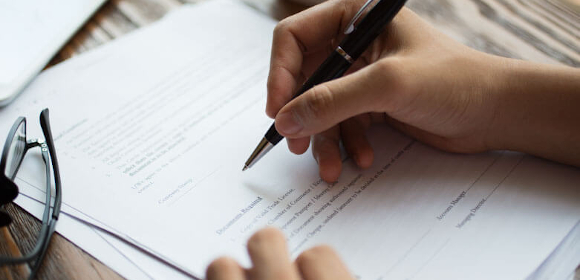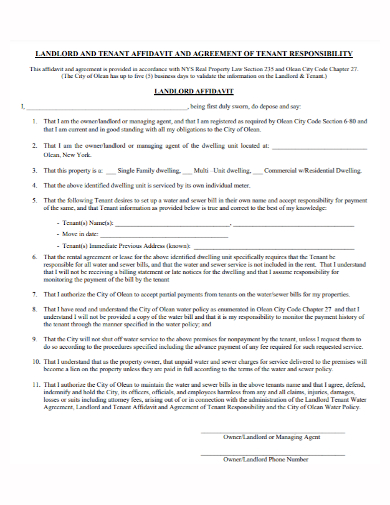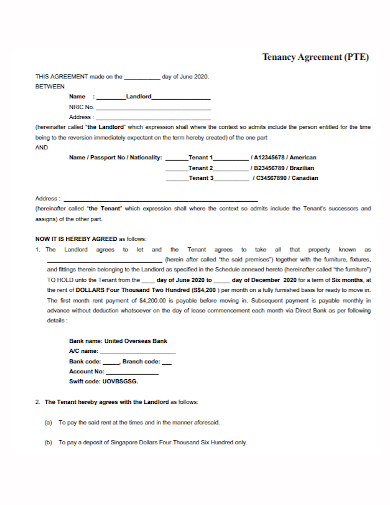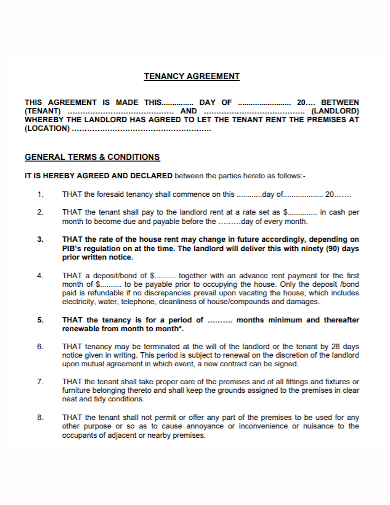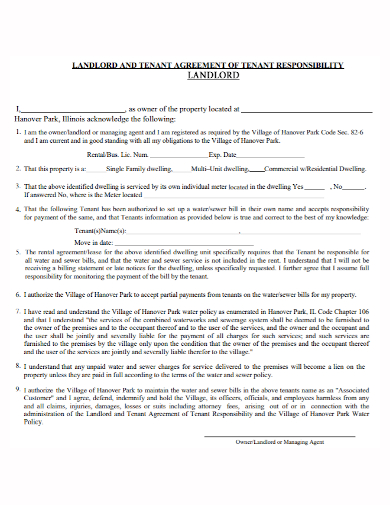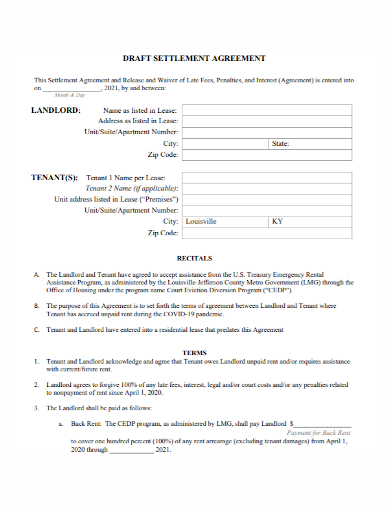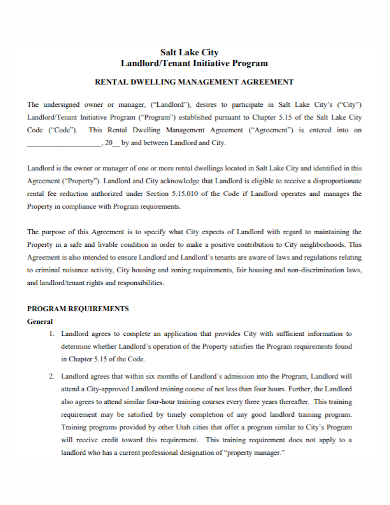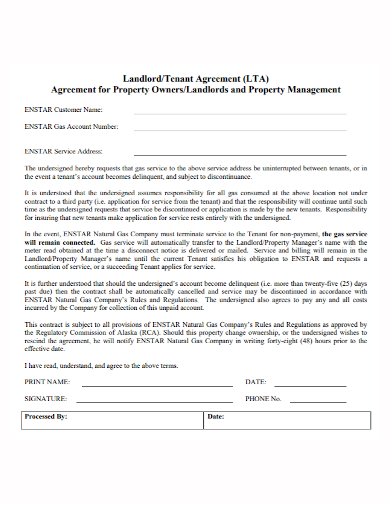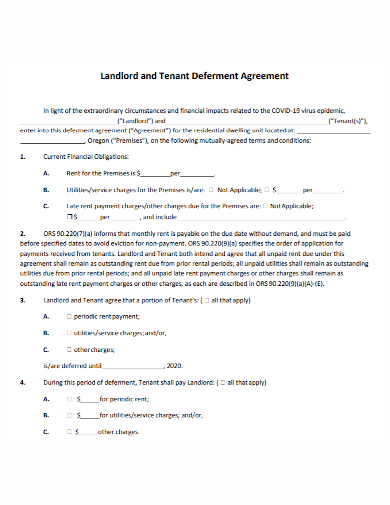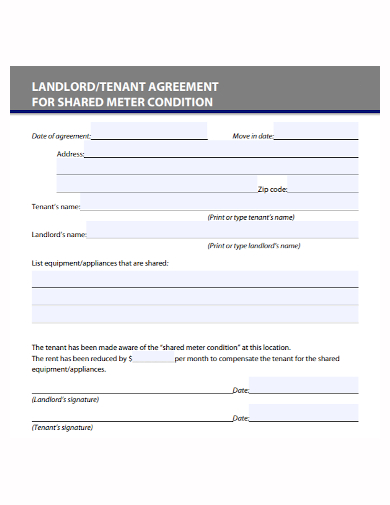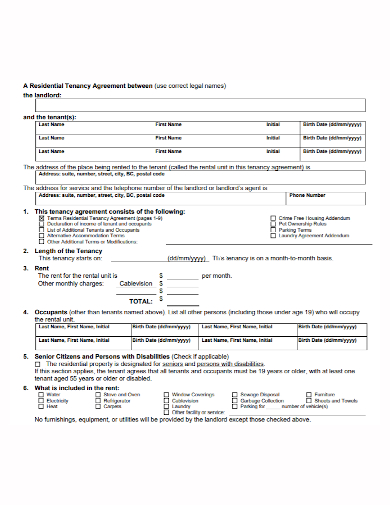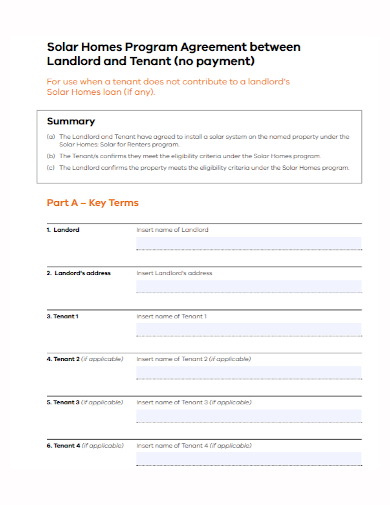Not everyone has the capacity to purchase their own property. For business owners or private citizens, sometimes it’s more feasible to rent or lease a space. And they do this for a number of reasons such as the location is convenient and safe, for businesses it could be that the location is ideal to draw in clients, the rent may be cheap and affordable, or perhaps the area itself is perfect for their personal needs. Once the tenant has finally decided to proceed, one very important document is needed to seal the deal. And that is a landlord and tenant agreement, which is set the terms and conditions for renting the property. To know more about this type of agreement, let us discuss this further below. And if you need any help preparing this agreement, we’ve got a wide array of free landlord and tenant agreement samples that are available for download on this page so check it out now!
10+ Landlord and Tenant Agreement Samples
1. Landlord and Tenant Affidavit Agreement
2. Landlord and Tenant Agreement
3. Sample Landlord and Tenant Agreement
4. Landlord and Tenant Property Agreement
5. Landlord and Tenant Settlement Agreement
6. Landlord and Tenant Program Agreement
7. Landlord and Tenant Property Management Agreement
8. Landlord and Tenant Deferment Agreement
9. Standard Landlord and Tenant Agreement
10. Agreement Between Landlord and Tenant
11. Program Agreement Between Landlord and Tenant
What Is a Landlord and Tenant Agreement?
An agreement literally is something you come into terms with. It is a settlement of various conditions in which two parties have initially discussed. Now, when it comes to a landlord and tenant agreement, this document itemizes and explains the rights and duties of both parties, includes the remedies in case of a breach of contract. Before signing this agreement, both parties have the chance to fully review its contents can consult a lawyer if required. To their best understanding, this document should be able to describe in full detail the expectations and agreement between the parties relating to the property for the duration of the landlord and tenant agreement.
How To Create a Landlord and Tenant Agreement?
It is quite important that an agreement is exchanged between a landlord and tenant in order to set things in perspective before this can lead to future disputes and misunderstandings. Besides, this document would build a better relationship between both parties since as you know it renting or leasing a property at most would take several months to a year.
The landlord has several duties and the tenant has his or her corresponding rights, as stated by the law. This includes possession, habitable conditions, and noninterference of use—all these must be outlined in the agreement. To help you create a landlord and tenant agreement here are several important details you should be able to cover.
I. Description of Property
Whether this is a room or a large expanse, the agreement should include the description and identification of the premises. It is the responsibility of the tenant to inspect the property beforehand and must take the premises as he or she finds them. The landlord is in breach of the lease if the property is unsuitable for residential or business use when the tenant is due to move in.
II. Agreement to Rent
According to the terms of the agreement, the tenant agrees to rent the rental property from the landlord together with specific furnishing or appliances.
III. Term of Tenancy
State the dates of the start of the tenancy and the end date.
IV. Termination
If the tenant is unable to continue taking possession of the property before the end of the term, the tenant will be held responsible for the remaining fees as stated in the agreement. And if the landlord is unable to deliver possession of the property because of unforeseen events like disasters, emergencies, etc. then the tenant has the right to terminate the agreement and any deposits made should be returned in full amount.
V. Payment and Late Fees
The agreement should state the monthly rental fee, the payment schedule, and the method. If there is a delay on the monthly rent, the landlord has the right to impose late payment fees, so include this as well in the document.
VI. Use of the Property
It should be properly defined in the contract up to what extent should the tenants be able to use the property, if there is any sort of disturbance that can cause inconvenience not only to other tenants but to the general public then the landlord has the right to interfere. In case of any illegal activities, the landlord has the right to evict the tenant.
VII. Alterations and Repairs
The tenant is not allowed to make any repairs or alterations without the consent of the landlord. It should be included in the contract up to what extent of alternations are allowed within the property.
VIII. Utilities and Responsibilities
Include in the agreement if the tenant is responsible to pay the utilities or should this be already included in the monthly rent.
IX. Right to Access
The landlord has the right to access the property in case of any emergency or should they need to conduct any annual inspections or any safety or maintenance purposes, then the tenant should be advised beforehand of the schedule.
X. End of Contract
When the tenants do not wish to continue to rental or the agreement has reached its end date, the tenant will be given a list of things to do before leaving the property.
XI. Additional Provisions
You may want to include other details not found in the list that can be relevant such as insurance, severability of provisions, subletting clause, modification terms, and many more.
FAQs
Why Is an Agreement Important in Rentals?
This is important because this will clarify and set out the terms of the agreement between the landlord and the tenant. Also, it may lessen any future disputes between both parties.
What is Subletting?
This simply means renting out a room or apartment to someone that you are already renting.
What Is the Difference Between a Renting and Leasing?
Renting would mean regular payment of tenancy, which expires after the duration of a month and at the end of which it is automatically renewed whereas leasing the conveying of land or property to another for a specified term or period of time.
A landlord and tenant agreement is an important document that will establish a firm relationship between parties and will help clarify expectations. So start preparing one now by downloading our free templates found on this page!
Related Posts
FREE 10+ Trial Agreement Samples In MS Word | Google Docs | Apple Pages | PDF
FREE 9+ Shop Rental Agreement Samples [ Commercial, Lease, Tenancy ]
FREE 10+ Charter Agreement Samples In MS Word | Google Docs | Apple Pages | PDF
FREE 10+ Mentoring Agreement Samples In MS Word | Apple Pages | PDF
FREE 10+ Partner Agreement Samples In MS Word | Google Docs | Apple Pages | PDF
FREE 10+ Individual Agreement Samples In MS Word | Google Docs | Apple Pages | PDF
FREE 10+ Strategic Agreement Samples In MS Word | Google Docs | Apple Pages | PDF
FREE 10+ Equity Agreement Samples In MS Word | Google Docs | Apple Pages | PDF
FREE 10+ Producer Agreement Samples in MS Word | Apple Pages | PDF
FREE 10+ Grant Agreement Samples In MS Word | Apple Pages | PDF
FREE 8+ Meeting Agreement Samples in MS Word | Google Docs | Apple Pages | PDF
FREE 10+ Community Agreement Samples In MS Word | Google Docs | PDF
FREE 8+ Real Estate Option Agreement Samples in MS Word | PDF
FREE 10+ Call Option Agreement Samples In MS Word | PDF
FREE 10+ Advertising Agreement Samples In MS Word | Google Docs | Apple Pages | PDF
